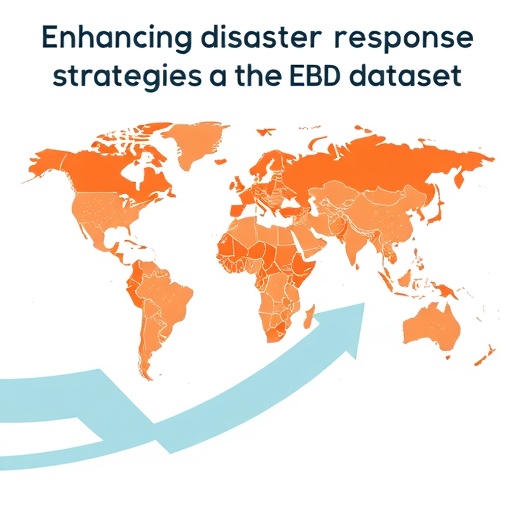A groundbreaking new dataset known as the Extensible Building Damage (EBD) dataset is set to revolutionize disaster response mapping. The integration of high-resolution satellite imagery with advanced deep learning techniques provides a significant enhancement to how damages from natural disasters are assessed. Covering incidents from 12 distinct natural disasters, this dataset employs a semi-supervised fine-tuning (SS-FT) methodology, effectively shortening the typically labor-intensive process of manual damage labeling. As a result, it enables quicker and more efficient disaster recovery efforts on a global scale.
Building damage assessments (BDA) play a critical role in post-disaster recovery, guiding humanitarian efforts to identify regions that require immediate assistance. Traditional BDA methods have struggled with the slow development of datasets, primarily due to the extensive manual labeling required. By addressing this issue, the EBD dataset introduces an innovative approach that leverages deep learning for semi-automated labeling. This optimizes both the speed and reliability of damage assessment processes in areas affected by disasters.
Researchers from Zhejiang University and the RIKEN Center for Advanced Intelligence in Japan, along with contributions from various international institutions, have presented the EBD dataset. Their findings were published in the esteemed Journal of Remote Sensing. This dataset signifies a monumental advancement in disaster mapping by enabling machine-driven annotation processes that assist human experts in efficiently categorizing building damages in the aftermath of catastrophic events. The SS-FT methodology employed underscores a novel approach to overcoming the challenges traditionally faced in the labor-intensive domain of damage classification.
.adsslot_5yRq7Om8lB{ width:728px !important; height:90px !important; }
@media (max-width:1199px) { .adsslot_5yRq7Om8lB{ width:468px !important; height:60px !important; } }
@media (max-width:767px) { .adsslot_5yRq7Om8lB{ width:320px !important; height:50px !important; } }
ADVERTISEMENT
Comprising over 18,000 image pairs from 12 major natural disasters, the EBD dataset boasts more than 175,000 labeled buildings. Notably, it implements a semi-automatic annotation system that dramatically reduces manual workload by an impressive 80%. By making optimal use of both a limited quantity of manually labeled data and extensive libraries of unlabeled samples, the SS-FT approach fosters greater accuracy in damage assessments. This advancement is particularly impactful in areas where human resources are scarce, enhancing the potential for rapid and reliable evaluations.
Dr. Zeyu Wang, a lead researcher involved in this project, highlighted the transformative potential of the EBD dataset: “By reducing the reliance on manual labeling, this dataset represents a major step forward in how we can use artificial intelligence in disaster response.” He emphasized that the newly developed system not only accelerates the recovery process following disasters but also enhances scalability, allowing for worldwide application in response to future calamities.
To facilitate the research, high-resolution satellite imagery was sourced from the Maxar Open-Data Program, which was adeptly processed to analyze bi-temporal images for building damage assessment purposes. The SS-FT methodology was executed using the PyTorch framework, optimized through high-performance NVIDIA GPUs. This involved several iterations of fine-tuning, leveraging both labeled and unlabeled datasets to refine the accuracy of damage classification.
The implications of the EBD dataset on emergency response are profound, paving the way for rapid and precise damage assessment tools that could significantly alter how disasters are managed. As this dataset expands, it holds the promise of integration into overarching global disaster monitoring frameworks. Such integration would provide invaluable insights, particularly in light of climate change-related disasters, where timely intervention can mean the difference between life and death.
Furthermore, the semi-automated labeling system employed within the EBD framework is also adaptable to new disaster situations, reinforcing its status as an essential asset for disaster management efforts around the globe. Innovations exemplified by the EBD dataset stand to shape the future of disaster response, illustrating the capabilities of advanced technologies to facilitate more timely, accurate humanitarian actions.
In conclusion, the introduction of the Extensible Building Damage dataset marks a paradigm shift in the intersection of technology and disaster response. By harnessing the power of artificial intelligence and deep learning, this novel dataset not only streamlines damage assessments but also broadens the scope of what is achievable in disaster management. As operational capacities improve through such advancements, the critical need for rapid response systems will increasingly be met, potentially altering the landscape of disaster recovery in the years to come.
Subject of Research:
Article Title: Constructing an Extensible Building Damage Dataset via Semi-supervised Fine-Tuning across 12 Natural Disasters
News Publication Date: 7-Aug-2025
Web References:
References: 10.34133/remotesensing.0733
Image Credits: Journal of Remote Sensing
Keywords
Applied sciences, Technology, Remote Sensing, Disaster Management, Deep Learning
Tags: addressing natural disaster challenges.advancements in remote sensing technologyautomated damage labeling techniquesbuilding damage assessments innovationcross-institutional research collaborationdeep learning in disaster recoveryEBD dataset for disaster responseenhanced post-disaster recovery strategiesglobal humanitarian assistance improvementrapid disaster response solutionssatellite imagery for damage mappingsemi-supervised fine-tuning methodology





